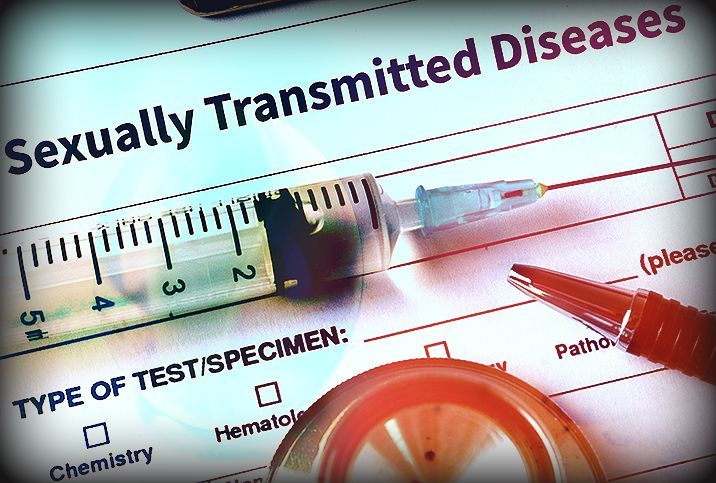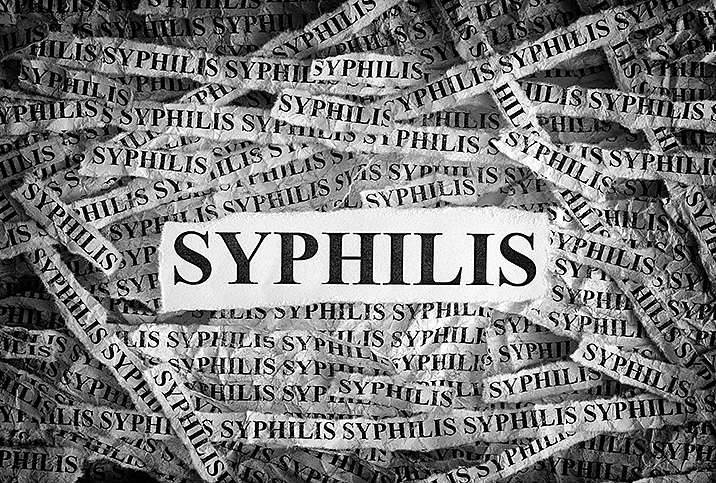FDA Approves First At-Home Test to Diagnose a Syphilis Infection

Key Points
- Syphilis case numbers have risen rapidly in the United States over the past few years.
- The U.S. Food and Drug Administration has approved the first at-home, over-the-counter test for syphilis, which drugmakers say may help slow the epidemic.
- The test is not a substitute for lab testing. People who take the test still need to see a healthcare provider for a complete diagnosis.
Syphilis, a sexually transmitted disease (STD), is highly contagious and potentially dangerous. That's why early detection and treatment are crucial.
In hopes of stopping syphilis' rapid spread throughout the United States, the U.S. Food and Drug Administration approved the first at-home, over-the-counter screening test.
How does the at-home test for syphilis work?
A healthcare provider diagnoses a syphilis infection by testing a person's blood or the fluid from a syphilis sore. The self-administered test by NOWDiagnostics requires users to prick themselves on the finger, collect a drop of blood and then apply the blood sample to the test. Results are ready within 15 minutes.
The at-home test provides a more private option for people reluctant or unable to see an in-person provider. NOWDiagnostics and the FDA stress that the test alone isn't sufficient to diagnose the disease—users must still visit a healthcare provider for follow-up lab testing.
Getting a positive syphilis result in the at-home test could motivate people to book an appointment and abstain from sex until they've undergone treatment. Syphilis is often asymptomatic in its early stages, so this may be a person's first indication they have been infected.
Early treatment is essential as untreated syphilis can cause various complications, ranging from blindness to organ damage and death.
"Access to home tests may help increase initial screening for syphilis, including in individuals who may be reluctant to see their healthcare provider about possible sexually transmitted infection exposure," Dr. Michelle Tarver, acting director of the FDA's Center for Devices and Radiological Health, said in a statement in mid-August 2024.
"This can lead to increased lab testing to confirm diagnosis, which can result in increased treatment and reduction in the spread of infection," Tarver said.
After a clinical trial of 1,250 people, the FDA greenlighted the test showing it identified 93.4 percent of positive specimens and 99.5 percent of negative specimens compared to three FDA-approved laboratory tests.
Increased screening for syphilis is essential as the U.S. infection rate continues to soar. Numbers rose 80 percent between 2018 and 2022, from 115,000 to 207,000 known cases annually, according to the Centers for Disease Control and Prevention (CDC).
Rates of congenital syphilis—babies born to untreated moms—rose from 1,325 in 2019 to 3,755 in 2022.
Syphilis and pregnancy can have tragic consequences. Pregnant people with untreated syphilis are more likely to have a miscarriage, stillbirth or premature birth.
Babies with congenital syphilis are at higher risk of low birth rate, bone malformations, severe anemia, enlarged liver and spleen, jaundice, brain or nerve issues and skin rashes.
Recommended
- The Wildest $#*t Syphilis Can Do to You: What you should know about the unwelcome comeback of one of the most feared STDs in history.
- Men in the U.S. Are Dying Nearly Six Years Before Women: The longevity gap between men and women is now the widest it's been since 1996.
- Women's Sexual Health Is All-Encompassing: Physical health, mental health, libido and fertility are all key aspects of a healthy sex life.
Are there any drawbacks to the at-home syphilis test?
Like any test, the at-home syphilis test can produce false negative or positive results, which is one reason testers should receive follow-up lab testing.
Also, people who've previously had syphilis will receive a positive test result, even if they've been successfully treated, according to the FDA.
What is important to know about syphilis?
The problem with syphilis is that, while it's treatable and even curable, it can lead to severe disease and even death when unaddressed.
A major drawback is that people often don't know they have syphilis until at least two weeks after contracting it. Which means they may unknowingly have passed the disease on to their sexual partners.
Some people don't experience any symptoms at all, although others develop sores, called cankers, in this first of four stages of syphilis. Untreated, the infection enters the second stage, which causes various, sometimes severe, symptoms that may mimic other illnesses, such as the flu.
Syphilis symptoms in these first two stages resolve on their own, with or without treatment, but the disease doesn't go away. Unaddressed, the disease enters a latent stage, where someone may not experience symptoms for years at a time.
However, it can still damage organs during this period, leading to tertiary syphilis and complications such as heart damage, central nervous system disorders and tumors.
Using condoms is the best way—other than abstinence—to prevent syphilis. If you think you've been exposed to syphilis, it's essential to get tested as soon as possible. You should also ask your partners to get an STD test to determine if they've been infected.
The bottom line
Syphilis is back and proliferating nationwide. The newly approved at-home test may help stop the spread, but it's no substitute for lab testing.
If you think you may need screening for syphilis, you can purchase the at-home test over the counter at major drugstores. Contact your doctor to schedule an appointment to confirm a diagnosis.


















